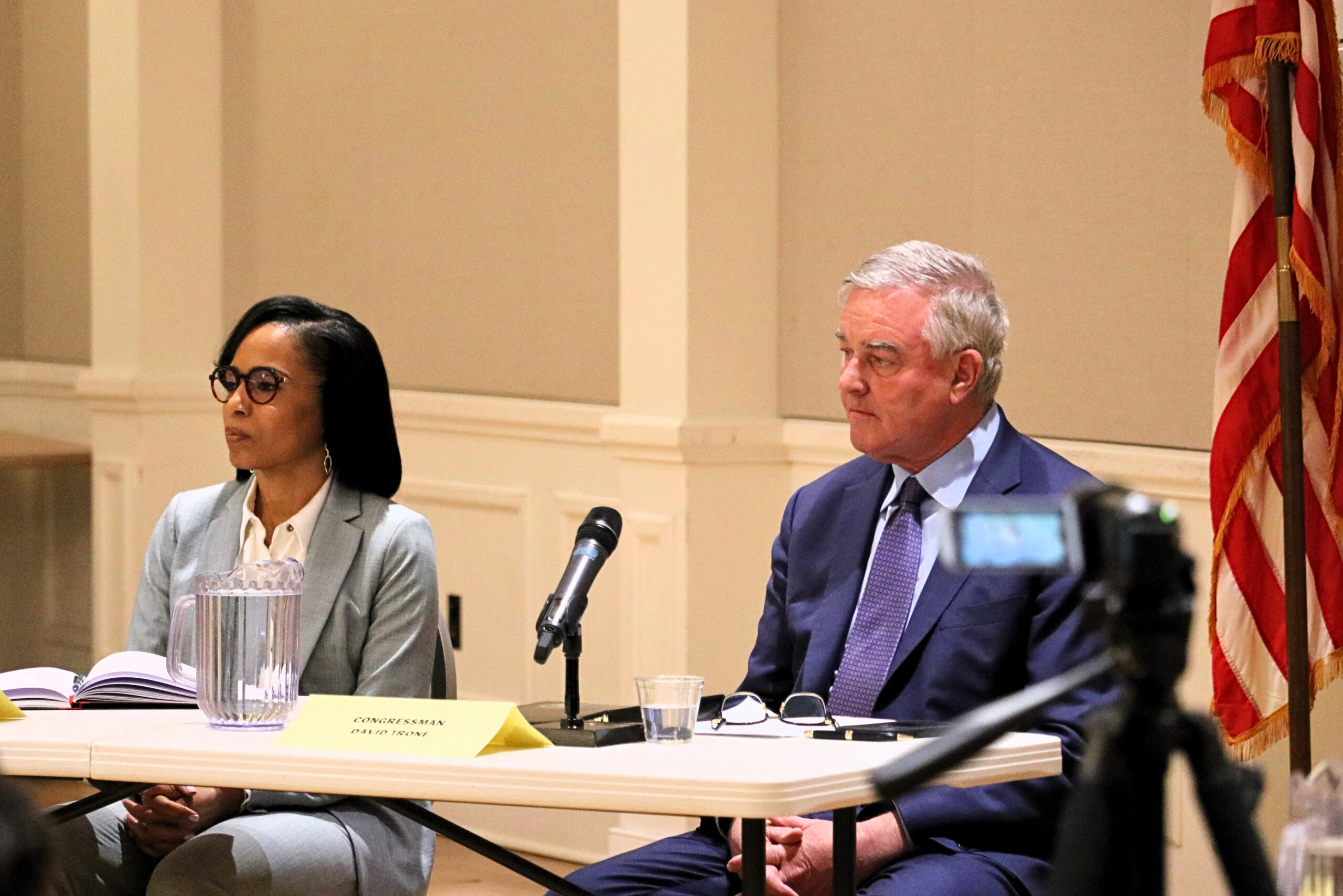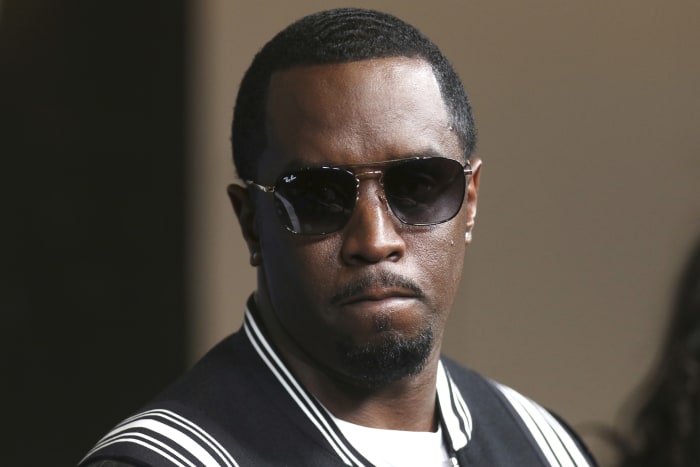World
The whole world is watching – Maryland Matters

All of a of a sudden, the Democratic primary for U.S. Senate in Maryland — plus the prospect of a juicy general election featuring former Gov. Larry Hogan (R), who is catnip to national pundits — is the most interesting story in U.S. politics.
For national political reporters, the story has irresistible if obvious elements — namely the historic nature of Prince George’s County Executive Angela Alsobrooks’ candidacy, along with the jaw-dropping spending of U.S. Rep. David Trone. Not to mention the primary has become decidedly snippy, with undeniable implications for the fall, as Democrats become increasingly panicked about the prospects of holding the Senate.
It all comes at a time when, but for the unifying presence of Donald Trump, Democrats at the national level would be riven by ideological fractures. Yet the internecine heat generated in Maryland is almost entirely based on personalities and factions: Trone and Alsobrooks in their own ways are classic establishment politicians, and it’s hard to imagine their voting records would differ even one iota in the Senate.
When the D.C. punditocracy lives so close to the scene of the crime, a media stampede turning up here in Maryland in the primary’s final days is almost inevitable. But what are they missing besides the conspicuous and compelling story lines? This is a race with plenty of nuance that can easily get lost past the headlines or casual look-ins.
Absent any recent public polling, the accepted wisdom is that the primary is tightening after Trone had been ahead for several months, and that anyone could win. It’s simple enough to reach that conclusion because Trone is going (mildly) negative and his campaign hasn’t released any polling lately; when he was clearly ahead, they were only too happy to do so.
It’s easy to forget, though, that Alsobrooks started this contest as the frontrunner, with a strong record, the support of most of the state’s Democratic establishment, a life story that seemed all but certain to appeal to a majority of Democrats, and the potential to make history and validate the party’s most loyal demographic, Black women. What happened in the intervening months?
One obvious answer is Trone’s $57 million in self-funding (and counting). But that’s not the only reason, and not every political self-funder prospers at the polls. Trone has actually spent his money wisely, targeting his message to various segments of the Democratic electorate and propelling the narrative that he is the true progressive in the race.
He has also, improbably, been able to cast himself as the insurgent candidate in the Democratic primary, which has way more appeal to certain voters than just being another obscenely rich white guy (albeit one with an up-by-the-bootstraps story of his own).
And let’s not forget that the Alsobrooks campaign has made some irreversible missteps in the primary, from hiring the wrong campaign manager, who assured her supporters for months that the race was in the bag, to napping on the teachers’ union endorsement, to over-relying on other elected officials to spread her message and promote her candidacy.
Alsobrooks has sharpened her message and her campaign operation has improved considerably since the beginning of the year. It seemed like she found her footing after Hogan got into the race, when the threat to abortion rights somehow looked greater with the Senate ever more in play, and Alsobrooks began forcefully prosecuting the case against Hogan.
All the elected officials who are supporting her are now flooding social media with positive messages and entreaties to vote, and accompanying her to early voting centers, creating at least the illusion of momentum. Trone, of course, has unwittingly contributed to this impression that he’s stalled a little by making some missteps of his own, with verbal gaffes and a TV ad with a surrogate from Prince George’s County preposterously suggesting Alsobrooks isn’t qualified for the job and that her supporters are less than top drawer.
How much is all this getting through to average voters?
This primary is certainly highlighting the “in crowd” vs. outsider divisions that have been apparent in Maryland Democratic politics for many years now. It’s notable that the call to elect Alsobrooks from so many of her backers comes with the plea to send the first Black woman from Maryland (and just the third in history) to the U.S. Senate, and the need to diversify the state’s all-male congressional delegation, both legitimate arguments. But the Democratic insiders were strikingly silent on those imperatives eight years ago, when then-Rep. Donna Edwards was running for a vacant Senate seat in the primary against then-Rep. Chris Van Hollen — and only one Black woman had been elected to the Senate at that point.
Many undecided or persuadable Democratic voters are trying to calculate whether Alsobrooks or Trone would make a stronger nominee against Hogan in the fall. That proposition can be argued either way.
Trone’s advantage is largely financial, with his implied vow to continue to pour untold millions into the election if he wins the primary. He has also suggested, inelegantly, that he may be able to attract voters in places Alsobrooks can’t.
Alsobrooks would provide a greater contrast to Hogan in the general election, and could potentially excite Democratic base voters more than Trone. One also gets the feeling also that the Republican attack machine can mine Trone’s business record for a negative ad blitz.
Not that the attack ads wouldn’t come for Alsobrooks, too, but they’d be subtle, more like dog whistles, with references to Prince George’s County crime or educational failures. Hogan professes to like Alsobrooks, and they have a connection of sorts, since Hogan’s dad once held the job Alsobrooks does now. But Alsobrooks certainly has no intention of playing nice if she’s the nominee.
Rather than worrying about who would make the stronger candidate in November, or trying to tear down the Senate frontrunner they don’t like, Democratic leaders might be better served trying to figure out why so many of their rank-and-file voters feel so good about themselves every time they pull the lever for Hogan.
When the former governor stunned the political world by jumping into the Senate race just before the filing deadline — fulfilling his greatest desire to matter once again — most Democrats were dismissive, insisting that a federal election in a presidential year, with Donald Trump and abortion rights on the ballot, with control of the Senate at stake, was a different animal than an off-year gubernatorial election. And it still is.
But as Hogan glides merrily around the state, seeking out and finding friendly audiences and repeating platitudes about his disgust for politics as usual and his zest for bipartisanship, Democrats are becoming increasingly concerned, if not outright alarmed.
Yes, it’s hard to imagine any Republican, even one as popular as Larry Hogan, running 25 to 35 points ahead of Trump, which is what he’ll have to do on Election Day to win. But this is one of the canniest politicians Maryland has ever known, shielded by Teflon, who wins this November even if he loses.
Which means the national media are certain to be back after the primary — if they leave the state at all.
Disclosure: The David and June Trone Family Foundation was a financial support of Maryland Matters in 2017 and 2018.










